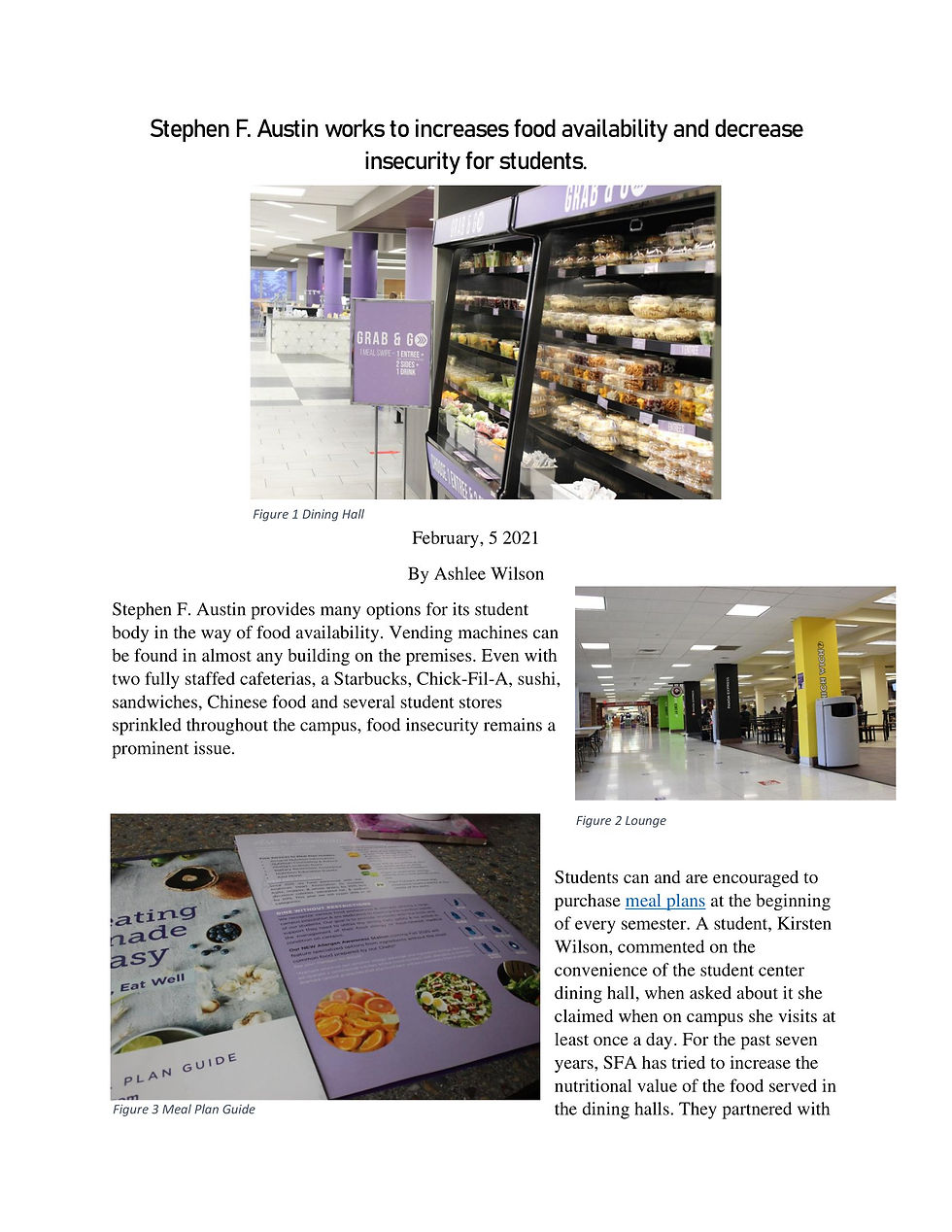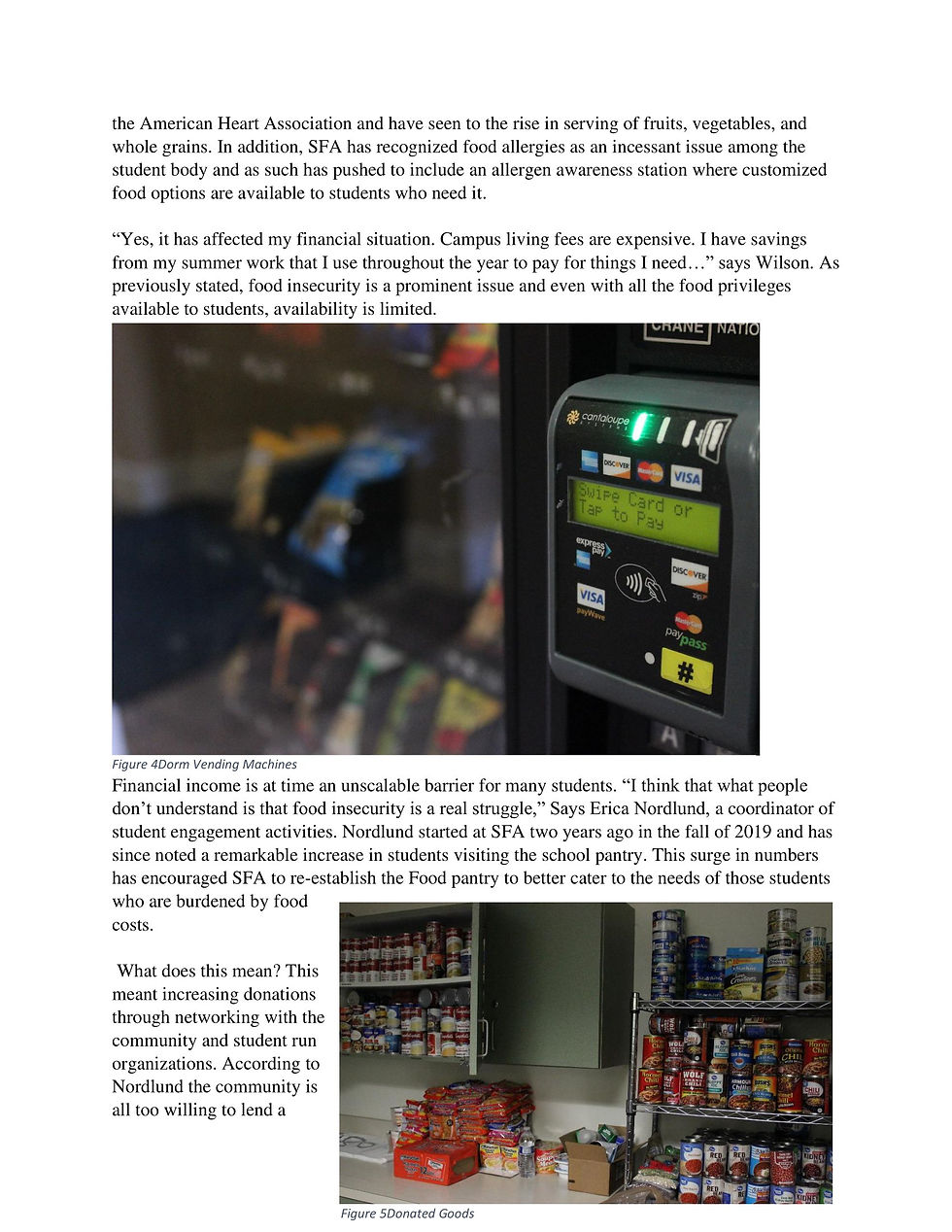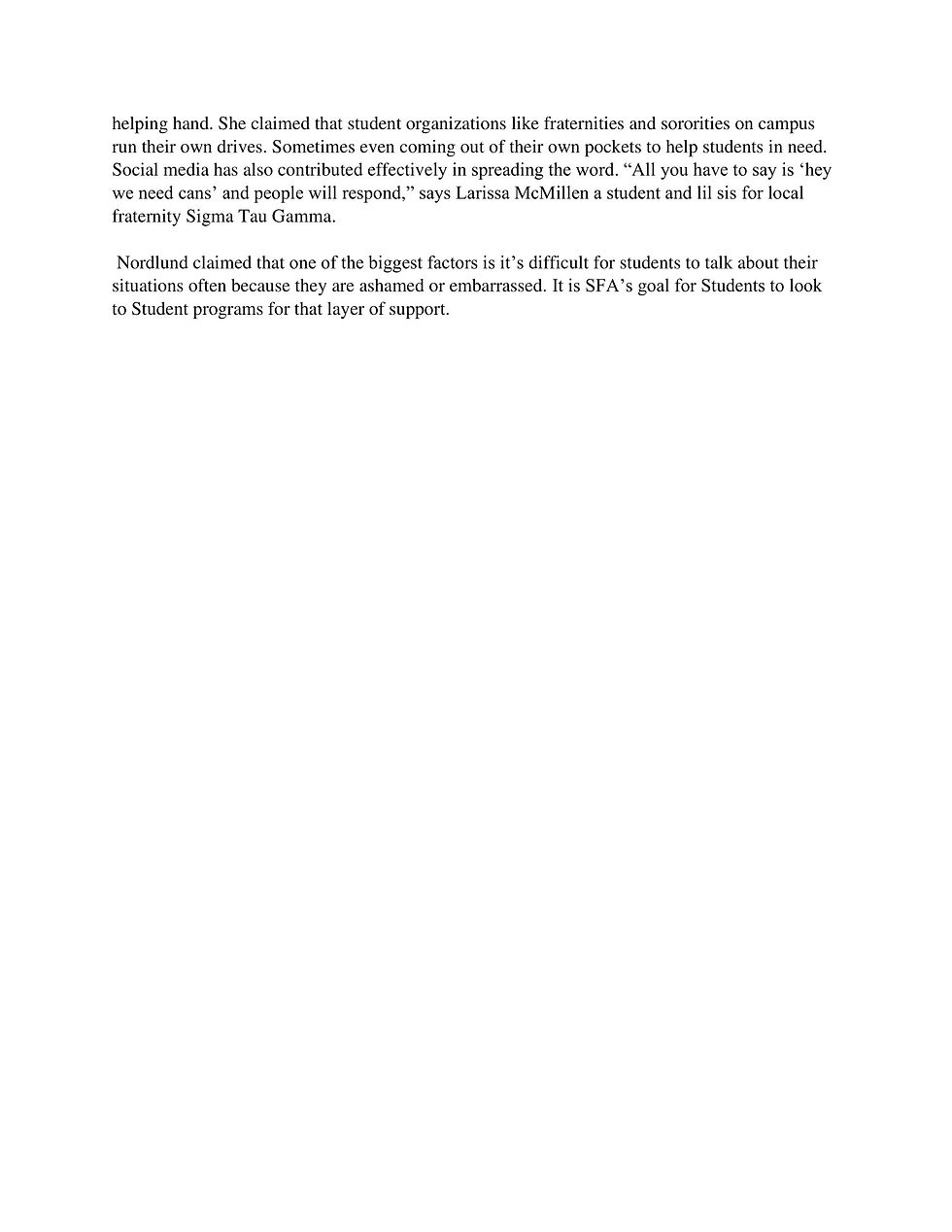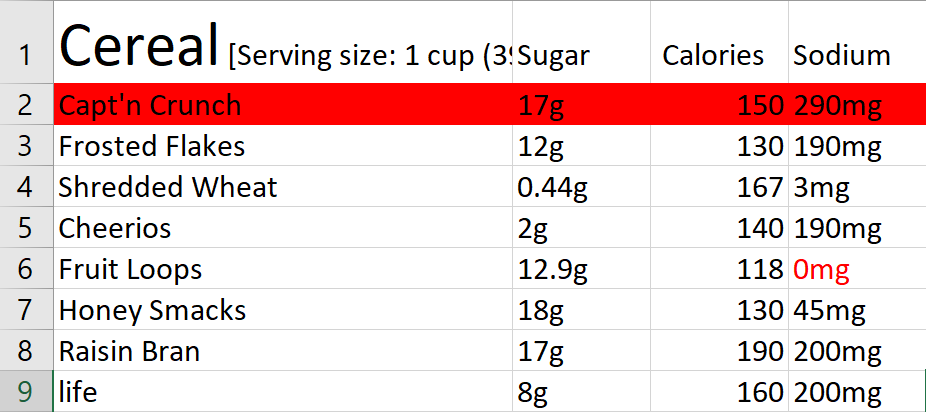- ashleenicolewilson
- Jun 5, 2023
- 0 min read






I want to start this blog by saying that I’ve never been good with numbers. I could never imagine myself pouring hours of the day intensely staring at excel spread sheets until my eyeballs pop out. The thought made me tremble and vigorously deny that I could ever have any involvement with data analytics because it belongs in this untouchable realm of “big brains.”
Information can be overwhelming. One thing that I’ve learned from surfing through heaps of information is that there’s so much of it. There are facts about all sorts of interesting subjects that people don’t even know they’re dying to know yet and you don’t need to be a crazy genius to get it. Most things nowadays are just a google search away. All that intimidation wears off quickly when you realize you don’t have to have a thousand wrinkles on your brain to understand what Mr. Google can pull up in two seconds. However easy it seems; journalist’s still have to do the leg work of making information both trustable and digestible to the masses.
On this assignment I was recently asked to provide a data sheet for something I’m passionate about. Now I’m passionate about many things, but considering my end goal is food journalism, I figured now probably wasn’t the time to express my love of show tunes (how would that even look in a data sheet, I ask you?) I tried to keep things simple and went with something like cereal. Cereal’s great and people still eat it, right? I got about half way through my research on cereal nutritional facts when a thought strikes me “Now I have the information, but what is it saying to me? What question is it answering for my audience?”

It was like a punch in the stomach. What was I even doing with this information? Panic surged through my veins like ice water. I was looking at my excel sheet and I was feeling really sorry about myself. I was seconds from scrapping the whole thing when the voice of reason shifted the chess board around and I saw things from a new angle. I asked myself another question: “how many people do you think consume the same bowl of glass we call cereal, on the daily, without knowing what’s actually in it?”
I was willing to bet that more people knew which cereals were considered healthy without actually knowing why. So, I singled out two very important columns in my information sheet. The calories, and sugar (then I added sodium for people who have high blood pressure) which I compared and organized into an infographic. While it’s nothing flashy or bursting with information, the information is impactful and neatly organized in a way people can consume.

You see, without someone to organize it, data is just data—meaningless gobbly gook that will mostly go unnoticed. I assembled nutritional facts from different cereals, and placed them together in a formation that answered my previous question. My audience can see this information, compare it, understand it, and learn from it. Sure, it’s not ground breaking levels of information, but I’m informing them and they’re taking away something from it in the end. There weren't any complicated calculations, and I didn't pour through hours of case studies (though I respect those who do this on their daily grind.) While this my assignment is based on simple cereal nutrition data, what if we substituted all of that with nutritional fact from local fast-food places? Or recipes people were interested in replicating at home? I don’t know about you but I’d want to know if the lentil soup from Carrabba’s was as chalked full of calories as a big mac. The content of the data is a variable that can determine its value and human interest (like a graph that shows the popularity of local donut shops versus something like sugar in gluten free donuts. Both would clearly draw in different audiences)
When working with data, the context of the message you’re trying to get through to your audience can always change and shift, but the communication should always be at the core of your thinking. What are you trying to tell people? Use your data to establish a coherent and clear message, even if it’s not game changing or overly complex, it can still be interesting and informative.
A starter guide of do's and don'ts to follow when covering a story.
Being a muckraker comes with its ups and downs. You can learn some amazing things chasing a story and capturing it for the world to see, but sometimes it’s not all sunshine and rainbows. There is a variable amount of behind the scenes action that goes unseen. Backstage factors that can make or break a good story.
Speaking from my own experience, I grew spoiled as a student on expensive equipment on loan. I forgot one of the most fundamental rules as a professional: a reliable journalist always takes the initiative, even when things go wrong. In my case, I had to sacrifice the quality of my footage. My camera had no memory card, so I had to make do with my cell phone camera. I didn’t plan ahead so there was no tripod to steady my shots, I didn’t prepare a guest to interview, and I didn’t do enough research on my event. I let a minor setback wreck my chance at success.
Journalism aside, as a person in the working world things won’t always go the way we plan. This is where the term “making the best of a miserable situation” becomes one of those unwanted “adulting” situations we often find ourselves in. You could mope about it or you could collect your courage, do your best and be more flexible. With that said, this is how you can turn my rainy day into your rainbow. 1. Always make a plan!
If you shirk this rule right off the bat, you can expect your results to be less that favorable from the start. Poor planning can be detrimental to your success, like watering a garden with a leaky bucket—scattered and messy. When you’re covering a story, you can’t just research thoughtlessly. I usually let the inverted pyramid guide my research. I figure out the when, where, what, why and how. In journalism I find this method especially helpful, because time is never on your side. You have to utilize what you have when you have it most of the time and a thoughtful approach will make it so that your plans—even if they don’t go as you like—are more adjustable in a crisis. Having a good plan is like having that second parachute, while you hope nothing goes awry, you won’t regret the foresight. Know where you’re going, who is going to be there, why you’re going and how you’re getting there, and have a back up plan incase one of those things falls through. Assuming you employ and devote yourself to a great plan that looks like it’ll go off without a hitch; there is only so much control anyone can have. This brings us to my next tip.
2. Make the most of what you can control.
Somethings are set in stone and can’t be changed, but I’ve learned that punctuality can make all the difference. Make sure to arrive early and don’t be afraid to stay late. Think of it like a trip to the movies. We’re always on the move and time is an economic resource, nowadays it’s quite common to study up on a movie before buying a ticket. Preparing your research, a week in advance will serve you a lot better than waiting until after the event and grasping at straws. It’s much easier to set up an interview if you know more about the subject. Getting back to the movie analogy, before assigned seating was a thing, it was better to arrive before the film started to secure a good seat. Attending an event for a story is no different in this regard, the early bird gets the worm. If you don’t snatch that perfect seat for yourself, then someone else will. In the field you’ll be competing for space with other media professionals so learn from my mistake, take the initiative and keep your target in your sights.
3. Eyes ahead-- never stop shooting!
If you’re taking shots, don’t stop until the event is done. If you’re filming the event, keep your eye on the prize. Winning shots come and go in the blink of an eye and once they’ve happened there is no turning back the clock. It’s better to have more footage than you planned than to have less, ALWAYS. Having a wealth of footage is always more beneficial as it gives you more material in which to craft your story. This is one mistake I made covering my first story for a convergence journalism class, which I made up for when I covered the career fair prep workshop. I had an abundance of footage, which is always good to have, but I lacked some of the most crucial footage: the interview. 4. Get out there and talk to people.
This tip writes itself. Talk to people. Ask questions. Carefully. Thought-out questions. Be prepared to listen. An interview isn’t the time to entertain yourself with idle lip flapping. In my opinion, interviews serve two purposes: gathering credible information from a source, and forming a human connections between the journalist and the audience. I can’t speak for everyone, but I’m more effected by a story that has a real person detailing their involvement in whatever is happening. Remember your interviewee has valuable information to share that’s only available to someone who is listening. Only interrupt if there’s something that needs elaboration. Otherwise, Insist. Insist. Insist. Insist on providing basic information (name, age, relations), a call back number, and more information if necessary. Be ethical, but take the initiative. A journalist’s whole job is to communicate information to an audience of people. In most cases this means getting up in people’s business (ethically) it means asking question after question and gathering as much credible information as you can. It means talking to as many as 20 or more sources to learn and gain perspective.
While I always mean well, mistakes are bound to happen. More importantly, they’re meant to teach. I’ve gained much more from just picking myself up after tumbling over and over than getting an A+ right off the bat. It is my humble hope that the burning embers of my failure can light the path to your success.